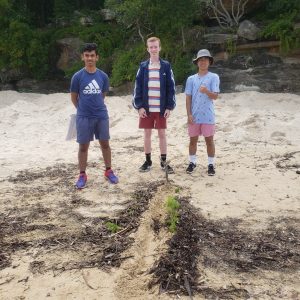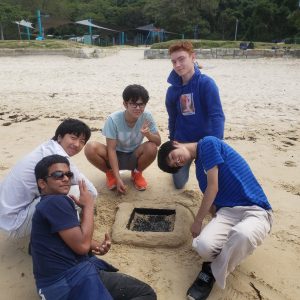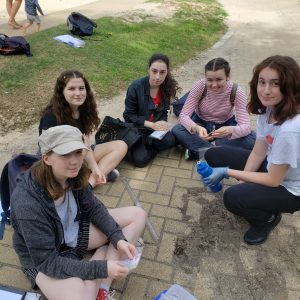
Year 10 Geography Clifton Gardens Excursion
On Friday the 29th of March, Year 10 Geography Students headed off to the Sydney Institute of Marine Sciences at Clifton Gardens to study microplastics. We met at the school at 8 early in the morning and took a long bus ride to Clifton Gardens Beach. There we were met by guides that first led us to the Lecture Theatre where we all sat in rows of seats, ready to watch a presentation upon the general topic of ocean environments and microplastics.
We were educated upon the harmful causes of environmental change within our marine environment due to microplastics and other pollutants, and what we as humans can do to manage and prevent any more of this sort of harm from being caused. Alongside that, we also learned about some rather interesting things such as how whales can have a positive impact on our climate as they release fecal plumes (which is extremely rich in iron and nitrogen) into the photic zone of the ocean to feed phytoplanktons, which are microscopic organisms that live underwater and have the ability to absorb carbon dioxide from the atmosphere.
Afterwards we headed towards the Marine Discovery Centre. It contained two historic rooms: the Coastal Room and the Sydney Harbour Room. These rooms had a series of beautiful displays that showcased what SIMS is all about – research of the marine, coastal and estuarine environment. We learned about current flows, contour intervals, marine creature eggs, and stormwater. This was informed through really educational interactive models, videos, VR headsets, maps, and much more.
We then enjoyed recess at the Clifton Gardens Beach for 20 minutes before heading off to do a Stormwater Study. We got into groups of five to do a practical activity that involved us testing how safe and good the stormwater in the area was by finding out its acidity level, alkalinity level, turbidity, and how much phosphate and dissolved oxygen it had. Overall, each group had generally safe, good water.
As the day went by, we also were educated upon stormwater managements used in real life to help manage plastics and prevent it from getting into our oceans, and how effective each management strategy is. Each group was given a strategy that they had to physically create with materials provided. We went through each group’s strategy with full attention as some created impressive, intricate models, while others did wonderful interpretive dancing to display their management strategy.
Once we were done with that, we enjoyed lunch and finished the day participating in a citizen science project conducted by Scott Wilson (a senior lecturer in environmental science at Macquarie University), that involved us finding a lot of macroplastics and microplastics. We first laid out a quadrant that was approximately 50cm by 50cm somewhere on the sand a bit away from the shore and scraped 5cm to 10cm of sand from the edges of the quadrant to the centre. We then proceeded to sift the collected sand into two sieves, one designed with smaller wire mesh for microplastics to put at the bottom and the other a bit larger for macroplastics to put on the top. We then used water from the ocean to get rid of as much sand as we could so we only had plastic left. We then continued to use tweezers to pick out all the plastics and place them into a small tube. The amount of plastic found was extremely shocking and saddening.
The day was coming to an end as we all exhaustedly packed our sand-filled belongings, ready to head back to school. It was definitely an unforgettable educational day that was an extremely eye-opening experience for our entire grade.
Anna Nguyen
Year 10




